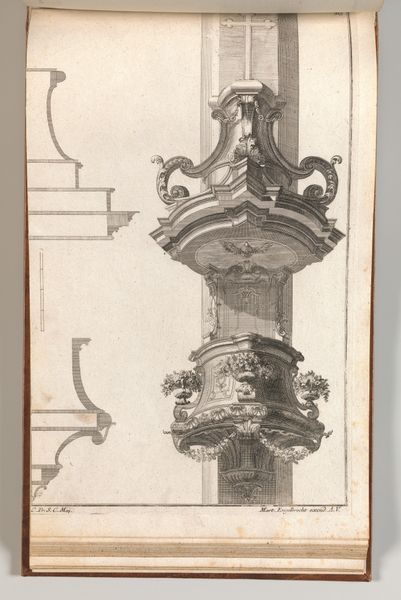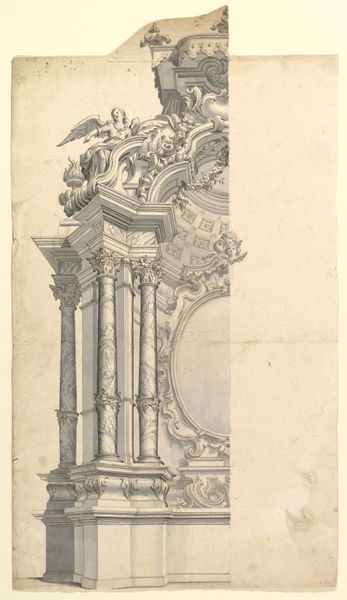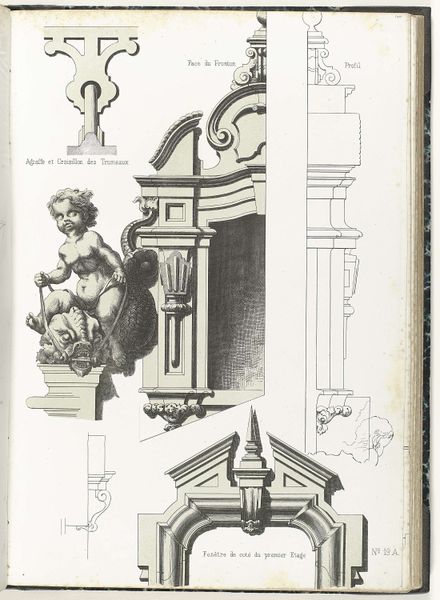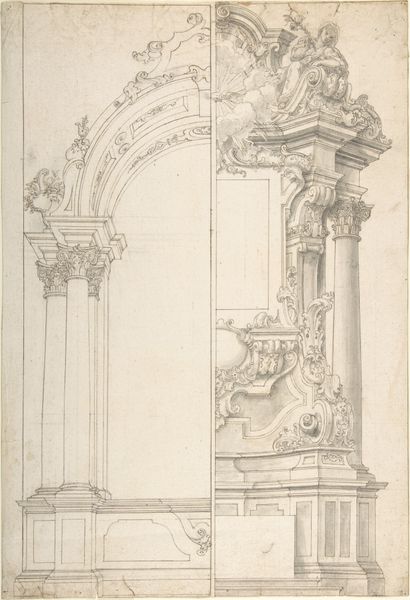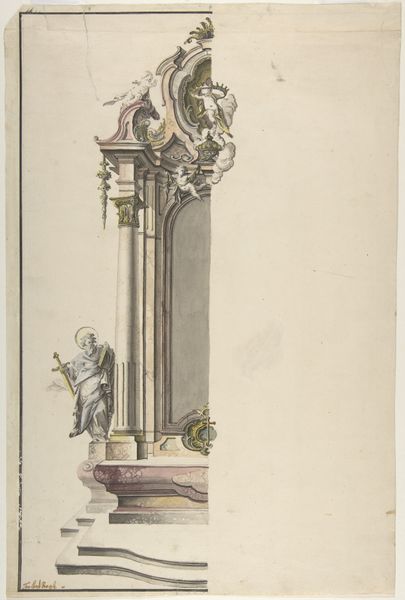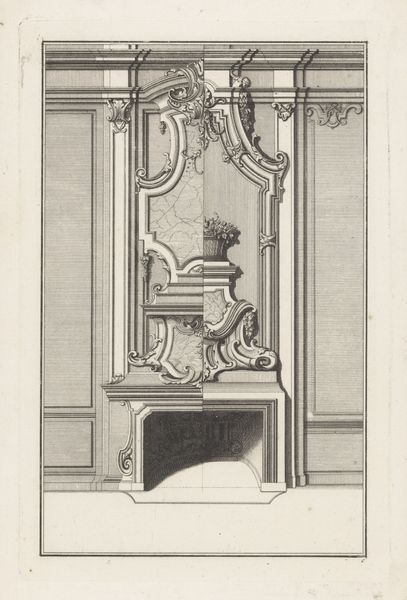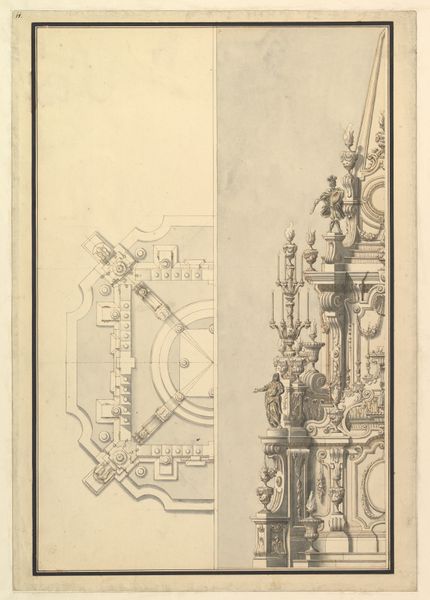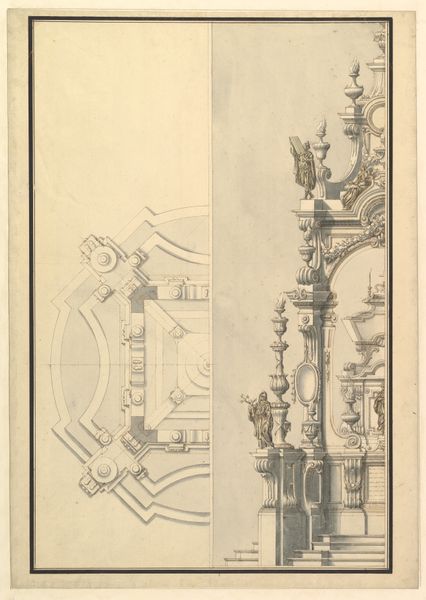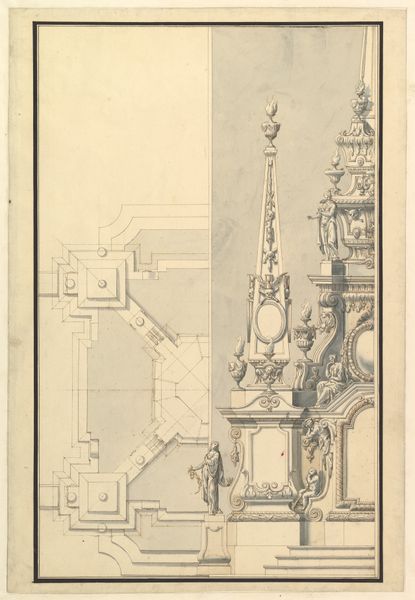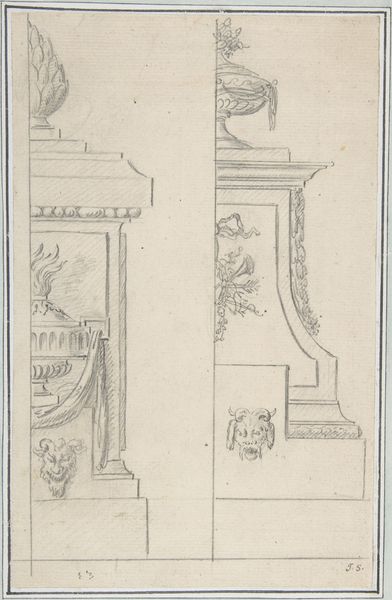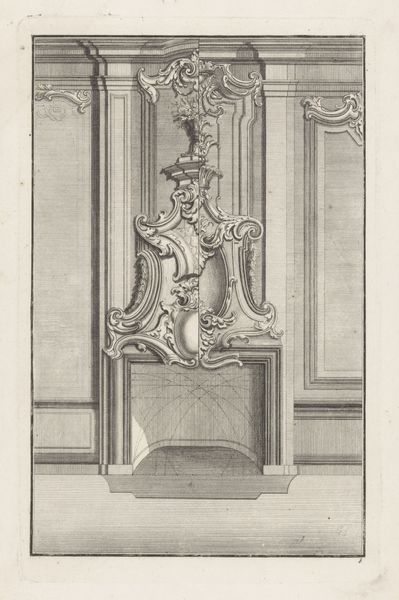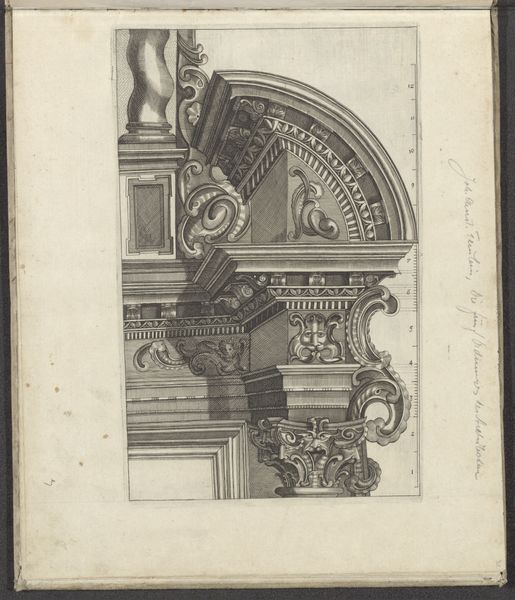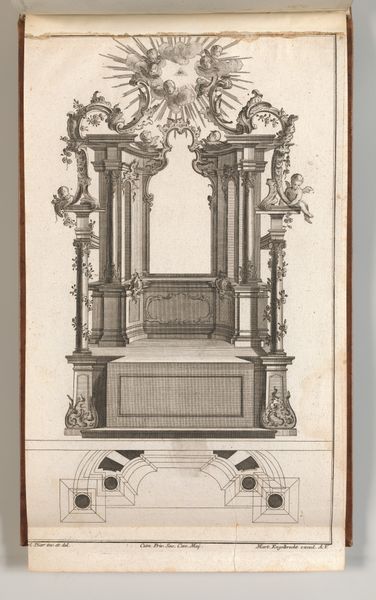
drawing, print, ink, architecture
#
drawing
#
pen drawing
# print
#
pen illustration
#
pen sketch
#
ink
#
architecture
Dimensions: height 418 mm, width 290 mm
Copyright: Rijks Museum: Open Domain
Editor: This is "Details van voorgevel," a print made with ink drawing from around 1866 to 1900. The draftsmanship is really precise, almost technical. What strikes me are all these depictions of ornate architectural details. How should we interpret this work? Curator: Let's consider this as a material document. What processes were involved in producing this print, and who had access to it? This was likely part of a pattern book, intended for architects and builders. Think of the labor involved in both the original carving and the subsequent reproduction of these designs. Editor: So, you're focusing on it as a commodity in the building trade? It’s not just about aesthetics then. Curator: Precisely! We often overlook the "how" and the "why" something was made. Consider the accessibility this print offered. Before mass communication, this would have spread certain styles, affecting cityscapes and architectural trends. These ornate details were markers of class and power. Editor: I guess I had only considered its artistic merit, looking at it like an isolated drawing. But now, seeing it as a small part of the larger production process makes me appreciate how it influenced physical structures, influencing class structure by allowing to repeat decorations. Curator: It pushes us to think beyond the individual artwork. These weren’t necessarily considered 'high art' at the time, but rather functional objects which disseminated ideas about ornamentation. It highlights how artistic labor operated within larger social and economic systems. Editor: So, by examining its purpose, circulation, and impact on labor, we can move away from idealizing 'art' and think of its social and economic effects, right? Curator: Exactly. We can ask who profited and who was employed, offering new understanding to familiar materials. Editor: I learned how to apply critical thinking, from mere looking to interpreting. It will surely allow us to examine visuality in a bigger frame!
Comments
No comments
Be the first to comment and join the conversation on the ultimate creative platform.
